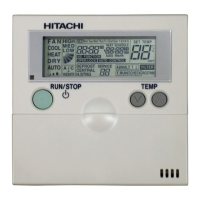7 Gateways for building management systems
KNX001
TCGB0106 rev.0 - 12/2014
666666
Reminder
• If T is not enabled, changes in the external system will not be transmitted to KNX nor to its links.
• If R is not enabled, signals cannot be read via Read requests from KNX.
• If W is not enabled, it will not be possible to act on the signal, nor the external system, nor group links.
• If U is enabled, on starting up KNX001, READ requests will be made to the KNX of the sending group.
• If U2 is enabled, on starting KNX001, READ requests will be made to the KNX of the rst listening address.
• Groups that are dened only as links will take the EIS type from the rst linked group.
• The group data read from KNX as a result of READ requests between other KNX devices will be treated
as Writes on groups (standard BCU1 behavior).
• Signals marked as read R must be congured: Fixed:T, Optional:R
• Signals marked as write W must be congured: Fixed:W, Optional:U o U2
• Signals marked as read/write RW must be congured: Fixed:W-T, Optional:R or U or U2
• Types are converted automatically, i.e. if an EIS5 arrives at an EIS1 group, an EIS1=(EIS5<>0) is made,
or EIS5=EIS9 and EIS9=EIS5, EIS6=EIS5(0..255), etc.
• It is recommendable that the listening addresses associated with different groups maintain the same EIS type
in all groups, otherwise unwanted conversions may occur.
• A write from KNX is propagated to the external system via the group address and the listening addresses.
• A write from the external system DOES NOT propagate to KNX via the listening addresses, but DOES update
the status of the local send groups that are used as listening addresses.
• If a send group is used as the listening address with other local send groups, a write from the external system will
update these groups but not their listening addresses.
• In case of Resetting the KNX bus, if this behavior is enabled, updating of groups marked as U or U2 is forced.
Restrictions
• P/I/S, P/S group numbers are permitted, or the coded group no. directly
• Repeated send groups are not permitted (Group column).
• Group 0 is not permitted, This is used for signals without a send group.
• Signals are not permitted if R-W-T-U is not enabled.
• Empty Groups are not permitted if only W is enabled and it has listening addresses.
• Repeated groups are not permitted in the same listening addresses eld.
• It is not permitted for a send group to be in the listening addresses (circular reference).
• Listening addresses are not permitted if W is not enabled, otherwise the listening addresses will not function.
Preliminary specications
• Multibit properties are executed only with a write of 1. The 0 stays in the send Group but does not perform
any function, except for the Central signal, which permits bits to be enabled and disabled without distinction.
• Multibit properties of type CHANGE 1+/0-, permit the status of a byte signal with only one bit to be changed.
On writing a 1 on this signal, the byte value will increase by one unit. On writing a 0 it will decrease by one unit.
On reaching the maximum or minimum value limits of the signal, this will be adjusted to the correct value at
the other extreme; for example, in the Mode signal, it will go from 4 to 0 on increasing by 1, and from 0 to 4
on decreasing by 1. In the case of the SetPoint signal, this behaviour does not occur, i.e. on reaching the top or bot-
tom limits the extreme value is kept without being turned around.

